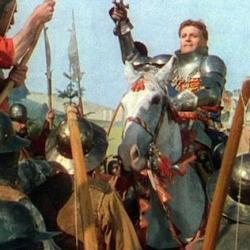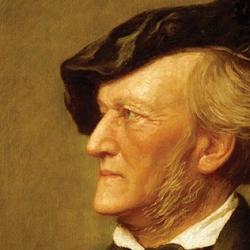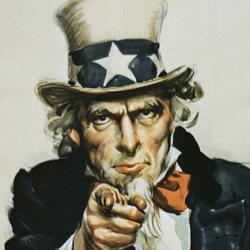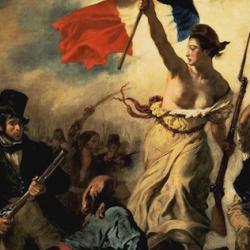Nations are “imagined communities,” and one of the ways nations imagine themselves is to imagine themselves as very, very old. The Finnish epic, the Kalevala, serves as an illustration of the nexus between ancient literature and national identity.
Anderson writes (Imagined Communities, 74-5), “In the eighteenth century the language-of-state in today’s Finland was Swedish. After the territory’s union with Czardom in 1809, the official language became Russian. But an ‘awakening’ interest in Finnish and the Finnish past, first expressed through texts written in Latin and Swedish in the later eighteenth century, by the 1820s was increasingly manifested in the vernacular. The leaders of the burgeoning Finnish nationalist movement were ‘persons whose profession largely consisted of the handling of language: writers, teachers, pastors, and lawyers. The study of folklore and the rediscovery and piecing together of popular epic poetry went together with the publication of grammars and dictionaries, and led to the appearance of periodicals which served to standardize Finnish literary [i.e. print-] language, on behalf of which stronger political demands could be advanced.’ In the case of Norway, which had long shared a written language with the Danes, though with a completely different pronunciation, nationalism emerged with Ivar Aasen’s new Norwegian grammar (1848) and dictionary (1850), texts which responded to and stimulated demands for a specifically Norwegian print-language.”
According to the The Encyclopedia of Nationalism, “Juhana Vilhelm Snellman (1806-1881), a philosopher and statesman, pushed for Finnish as the first language of the country, as summed up in his famous statement, ‘Swedes we are not, Russians we can never be, therefore let us be Finns.’ The importance of other literary symbols of national pride also became apparent at this time: The Finnish Literary Society was founded in Helsinki in 1831 with the goals of collection Finnish mythology and translating the Kalevala into Swedish or German. The Kalevala, Finland’s national epic, was compiled by Elias Lonnrot in 1835, based on lines of poetry about Finnish gods and heroes collected in the Russian region of Karelia. As evidence of a Viking-age culture of sophisticated literary achievement, the Kalevala played a similar role in the Finnish national movement as the medieval sagas did in Iceland.” [NB: I am told that the comment about not being Swedes or Russians was made not by Snellman but by A.I. Arwidsson.]
The Kalevala wasn’t a work that was taken up by nationalists, but literally the product of Finnish nationalists. It was part of an effort to elevate the Finnish language, and Finnish literature, to a level equal to that of Sweden and Russia.
In his introduction to his edition of the work, John Crawford describes the long effort to compile the mythologies of Finland, which came to a “glorious completion” in the world of Elias Lonnrot: “In the year 1828, he travelled as far as Kajan, collecting poems and songs of the Finnish people, sitting by the fireside of the aged, rowing on the lakes with the fishermen, and following the flocks with the shepherds. In 1829 he published at Helsingfors a work under the following title: Kantele taikka Suomee Kansan sek vazhoja etta nykysempia Runoja ja Lauluja (Lyre, or Old and New Songs and Lays of the Finnish Nation . . . The happy result of his travels throughout Finland, Dr. Lonnrot now commenced to arrange under the central idea of a great epic, called Kalevala, and in February, 1835, the manuscript was transmitted to the Finnish Literary Society, which had it published in two parts. Lonnrot, however, did not stop here; he went on searching and collecting, and, in 1840, had brought together more than one thousand fragments of epical poetry, national ballads, and proverbs.”
The impact of the Kalevala on Finnish national culture is quite direct. The shaman hero, Wainaimoinen (Väinämöinen), is a Finnish equivalent to Orpheus, Mercury, Apollo, and Moses, a cultural founder who gave to Finland many of its distinctive customs and arts. The date of publication for the epic became a national holiday, and it was a central feature of the Finnish resistance to russification during the late ninteteenth and early twentieth centuries. Sibelius composed the Kullervo, which was based on the Kalevala.
Finnish scholar Urpo Vento writes, “The struggle of the Finns in the 1890s against the incipient process of russification naturally caused a continuous need to take advantage of the public rituals of the anniversaries of Lönnrot and the Kalevala which had become national symbols. The 28th February, the date when Lönnrot signed the foreword to the Kalevala, was first celebrated in 1885. A great event was arranged to mark the centenary of Lönnrot’s birth in 1902, in connection with which the memorial sculpted by Emil Wikström, the winner of the competition organized for sculptors, was unveiled in the centre of Helsinki; the national poet Runeberg had been commemorated with a statue some years earlier. The 75th and 80th anniversaries of the Kalevala were celebrated impressively in 1910 and 1915. The journalist and poet Eino Leino wrote on Kalevala Day 1910: ‘The Kalevala and its celebration are only a symbol of the right of the Finnish people to defend their own existence as a nation and as a civilized people. A nation which has created the Kalevala has not been born into the world without reason’” (quoted in Vento, “The Role of the Kalevala in Finnish Culture and Politics,” Nordic Journal of African Studies 1 [1992] 90-91).
Vento adds that names from the Kalevala are common in Finnish business and society: “Ilmarinen, Lemminkäinen, Väinämöinen, Louhi and Sampo have been used as the names of steamers and other ships. Virtually all the Finnish insurance companies, which market various kinds of security services, have taken their names from the epic: Ilmarinen, Kaleva, Kullervo, Osmo, Pohjola, Sampo, Tapiola, Wellamo. Most Finnish towns and cities have names originating from the Kalevala; in many towns there are parts where all the names are Kalevalaic. The Kalevala has also been used in tourism, and especially in Eastern Finland during the past few decades ‘Kalevala villages’ have sprung up” (92).















